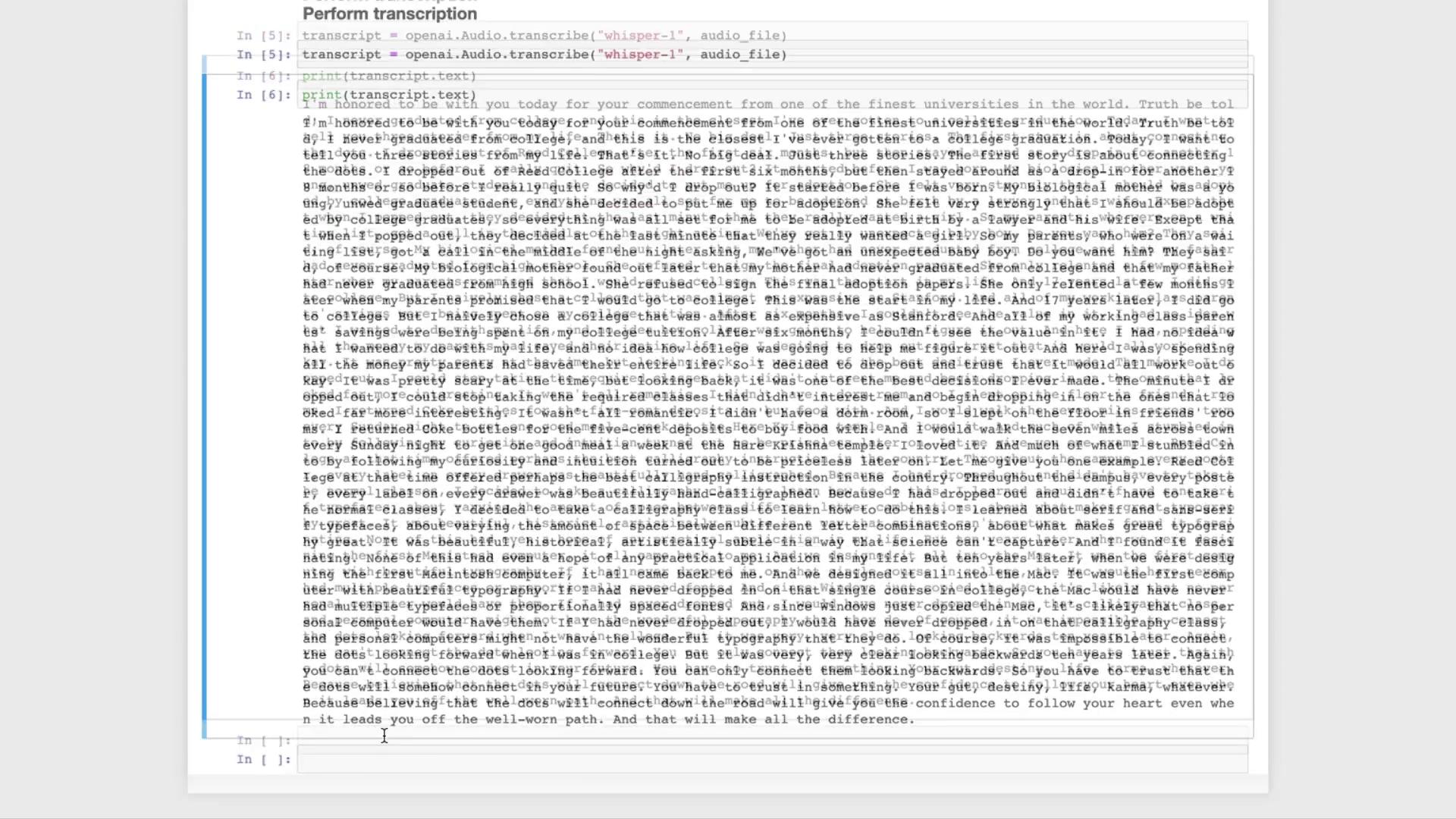Mastering Generative AI with OpenAI
Audio Transcription Translation
Demo Audio Transcription
In this tutorial, you’ll learn how to transcribe a short audio clip using OpenAI’s Whisper API. We’ve prepared a trimmed MP3 of the first five minutes of Steve Jobs’ Stanford commencement speech for this demo.
Prerequisites
- Python 3.7+
- An active OpenAI API key
openaiPython package (pip install openai)IPythonfor in-notebook audio playback (pip install ipython)
1. Play Audio Locally
Before sending the file to Whisper, verify playback in an IPython environment:
import IPython
file_name = "data/jobs.mp3"
IPython.display.Audio(file_name)
2. Transcribe with Whisper
Whisper currently offers the whisper-1 model for speech-to-text. Set your API key in the environment, then transcribe:
import openai
import os
# Load your OpenAI API key from environment
openai.api_key = os.getenv("OPENAI_API_KEY")
file_name = "data/jobs.mp3"
with open(file_name, "rb") as audio_file:
transcript = openai.Audio.transcribe("whisper-1", audio_file)
print(transcript.text)
Note
Make sure OPENAI_API_KEY is correctly set. On macOS/Linux:
export OPENAI_API_KEY="your_api_key_here"
3. Next Steps: NLP Pipelines
Once you have the raw transcript, you can feed it into large language models like GPT-3.5 Turbo or GPT-4 to:
- Summarize the speech
- Generate Q&A bots
- Classify or analyze sentiment
- Extract key topics
| Use Case | Model | Example Link |
|---|---|---|
| Summarization | GPT-3.5 Turbo | API Reference |
| Question & Answer | GPT-4 | API Reference |
| Sentiment Analysis | GPT-3.5 Turbo | Custom prompt engineering |
4. Run Whisper Locally
If you prefer not to use the API, you can run Whisper on your machine via the open-source repository:

References
Watch Video
Watch video content
Practice Lab
Practice lab